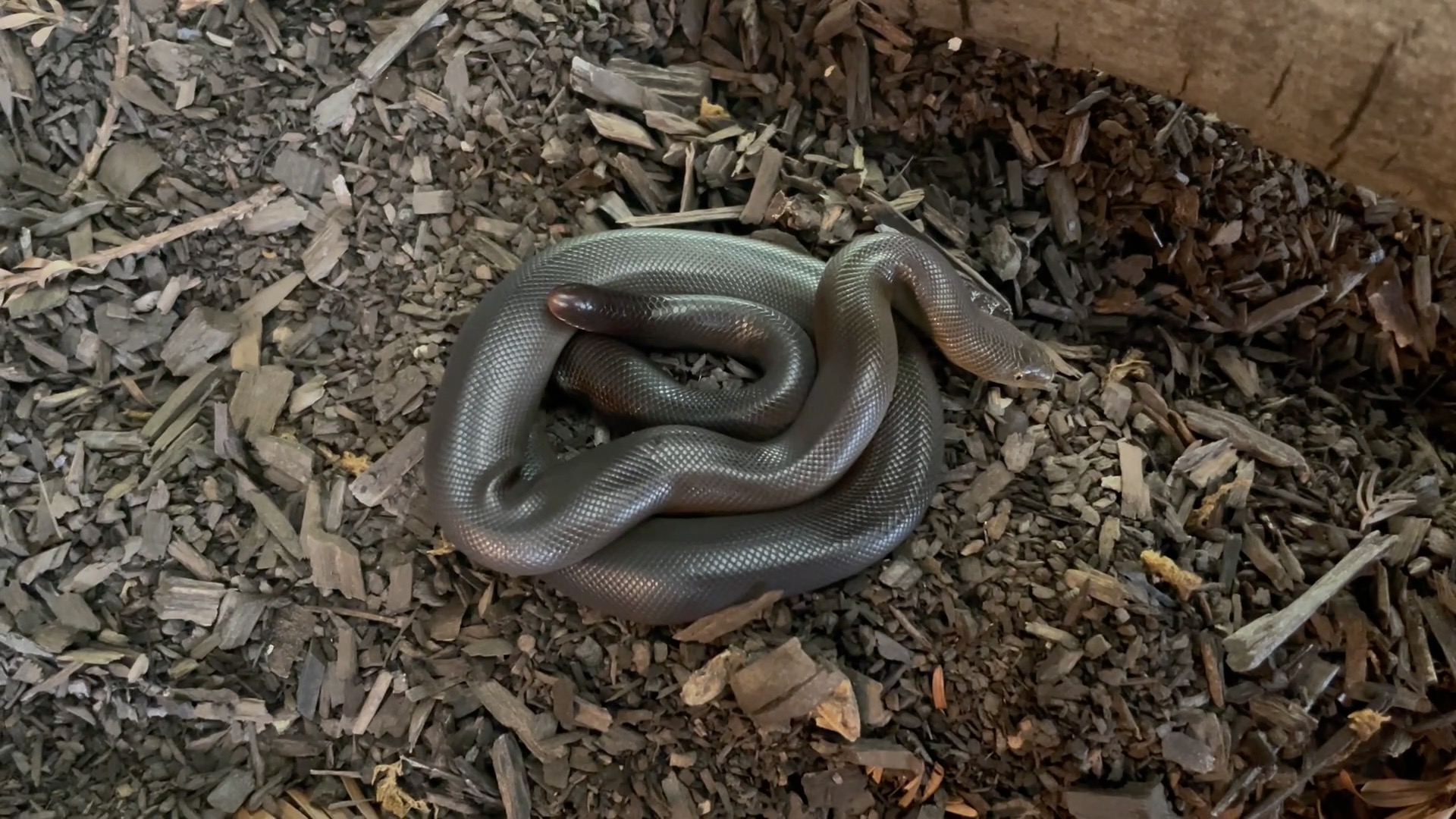- Discover the fascinating habitat of rubber boas in the redwood forest, highlighting their hidden existence under logs and rocks.
- Explore the care and observation of rubber boas in zoos, emphasizing the practices of zookeepers to monitor these elusive creatures.
- Delve into the significance of zoo education, focusing on visitor engagement through exhibits and gift shop resources.
- Understand the conservation status and efforts related to rubber boas to ensure their survival and awareness.
- Learn about the adaptation strategies of rubber boas, from their nocturnal habits to their role in local ecosystems.
Rubber boas, often concealed in the rich landscape of the redwood forest, present a captivating glimpse into the world of reptiles. Under logs, rocks, and the lush leaf litter, these elusive snakes thrive. Imagine lifting a log and unveiling a rubber boa nestled beneath, part of its mysterious life in one of the most majestic ecosystems on Earth.
Rubber boas, characterized by their smooth, brown skin and small stature, usually measuring between 14 to 33 inches, are masters of stealth. Their brown color allows them to blend perfectly into their surroundings, offering them protection from predators. This adaptation is essential for survival in the dense undergrowth of the redwood forests. As evening descends, these serpents become active, scouting for small mammals, birds‘ eggs, and even other snakes. Their nocturnal behavior plays a crucial role in controlling the population of their prey, contributing to the ecological balance.
In zoological settings, observing these secretive creatures can be a challenge. Due to their preference for the dark and cozy shelters, rubber boas at zoos might seem invisible to the untrained eye. Skilled zookeepers, however, are adept at ensuring the boas are thriving. They may gently lift logs in designated habitats, conducting health checks, monitoring behavior, and sometimes even weighing or measuring them. Such practices underline the dedication to wildlife care that embodies modern zoo management.
For visitors, experiencing rubber boas in a zoo extends beyond just seeing them. It involves a comprehensive understanding of their life and conservation status. Educational programs, alongside engaging exhibits, aim to foster a deeper appreciation amongst zoo visitors. These initiatives often extend to the gift shop, where people can learn more about the species through books, models, and interactive displays. This approach not only promotes knowledge but also encourages conservation efforts for the species.
The conservation status of rubber boas remains relatively stable, but continuous habitat alteration and urban expansion pose potential threats. Efforts focus on habitat preservation and public education to safeguard their natural environments. Local conservation bodies often partner with zoos to deliver impactful programs aimed at sustaining these unique reptiles and their habitats. Public awareness about the ecological significance of rubber boas is crucial for their continued survival in the wild.
Understanding the unique adaptations of rubber boas opens a window to their exceptional survival strategies. Their slow metabolism lets them thrive on minimal food, while their cold-resistant capabilities allow them to endure temperature fluctuations. Furthermore, their ability to produce a mild defensive musk serves as an additional deterrent against predators.
Rubber boas contribute significantly to their ecosystems as both predator and prey. The balance they maintain within the food chain underscores their ecological importance. Engaging with this species not only enriches our understanding of the natural world but also highlights the interconnectedness of all living things.
In areas where human activities threaten their existence, conservation measures are essential. Collaborative efforts between zoos and conservation organizations work towards habitat protection and implementing recovery strategies. By educating the public, promoting sustainable practices, and supporting research, these initiatives strive to maintain biodiversity within the redwoods and beyond.
For many, visiting rubber boas in a zoo can spark a lifelong interest in reptiles and conservation. Through education, engagement, and action, zoos play a vital role in inspiring the next generation of wildlife enthusiasts. By focusing on species like the rubber boa, we can enhance efforts to protect our natural world, ensuring these fascinating creatures continue to thrive in their native habitats.
*****
Source Description
Did you know that you might find rubber boas when turning over a log in the redwood forest? They nestle under rocks, logs, and leaf litter.
Due to their nocturnal nature, boas at the Zoo may be hard to see. Zookeepers may gently and quietly lift logs in their habitat to check on the rubber boas in their care.
Stop by the gift shop to visit the snakes and learn more about this interesting native species!


